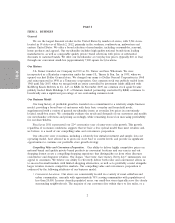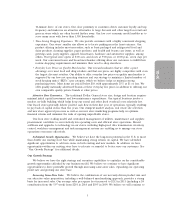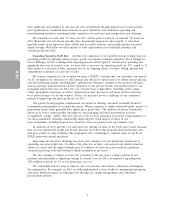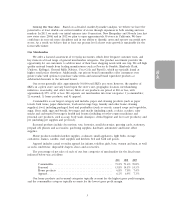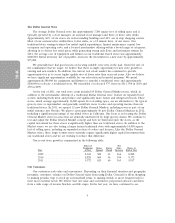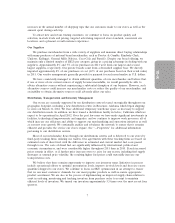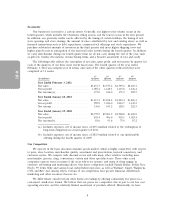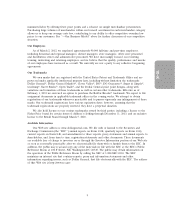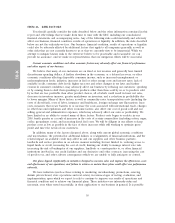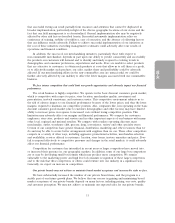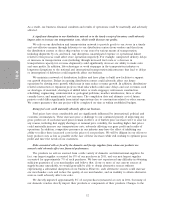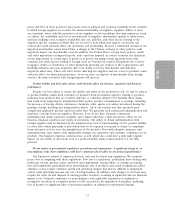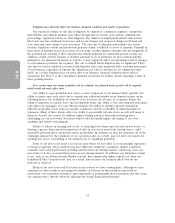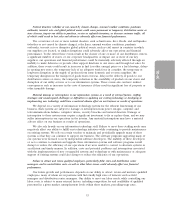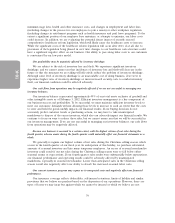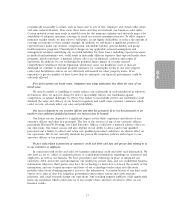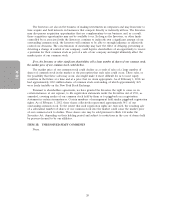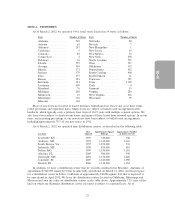Dollar General 2011 Annual Report Download - page 111
Download and view the complete annual report
Please find page 111 of the 2011 Dollar General annual report below. You can navigate through the pages in the report by either clicking on the pages listed below, or by using the keyword search tool below to find specific information within the annual report.
10-K
that successful testing can result partially from resources and attention that cannot be duplicated in
broader implementation, particularly in light of the diverse geographic locations of our stores and the
fact that our field management is so decentralized. General implementation also may be negatively
affected by other risk factors described herein. Successful systemwide implementation relies on
consistency of training, stability of workforce, ease of execution, and the absence of offsetting factors
that can influence results adversely. Failure to achieve successful implementation of our initiatives or
the cost of these initiatives exceeding management’s estimates could adversely affect our results of
operations and financial condition.
In addition, the success of our merchandising initiatives, particularly those with respect to
non-consumable merchandise, depends in part upon our ability to predict consistently and successfully
the products our customers will demand and to identify and timely respond to evolving trends in
demographics and consumer preferences, expectations and needs. If we are unable to select products
that are attractive to customers, to obtain such products at costs that allow us to sell them at a profit,
or to effectively market such products, our sales, market share and profitability could be adversely
affected. If our merchandising efforts in the non-consumables area are unsuccessful, we could be
further adversely affected by our inability to offset the lower margins associated with our consumables
business.
We face intense competition that could limit our growth opportunities and adversely impact our financial
performance.
The retail business is highly competitive. We operate in the basic discount consumer goods market,
which is competitive with respect to price, store location, merchandise quality, assortment and
presentation, in-stock consistency, and customer service. This competitive environment subjects us to
the risk of adverse impact to our financial performance because of the lower prices, and thus the lower
margins, required to maintain our competitive position. Also, companies like ours operating in the basic
discount consumer goods market (due to customer demographics and other factors) may have limited
ability to increase prices in response to increased costs without losing competitive position. This
limitation may adversely affect our margins and financial performance. We compete for customers,
employees, store sites, products and services and in other important aspects of our business with many
other local, regional and national retailers. We compete with retailers operating discount, mass
merchandise, outlet, warehouse club, grocery, drug, convenience, variety and other specialty stores.
Certain of our competitors have greater financial, distribution, marketing and other resources than we
do and may be able to secure better arrangements with suppliers than we can. These other competitors
compete in a variety of other ways, including aggressive promotional activities, merchandise selection
and availability, services offered to customers, location, store hours, in-store amenities and price. If we
fail to respond effectively to competitive pressures and changes in the retail markets, it could adversely
affect our financial performance.
Competition for customers has intensified in recent years as larger competitors have moved into,
or increased their presence in, our geographic markets. In addition, some of our large box competitors
are or may be developing small box formats which may produce more competition. We remain
vulnerable to the marketing power and high level of consumer recognition of these larger competitors
and to the risk that these competitors or others could venture into our industry in a significant way.
Generally, we expect an increase in competition.
Our private brands may not achieve or maintain broad market acceptance and increase the risks we face.
We have substantially increased the number of our private brand items, and the program is a
sizable part of our future growth plans. We believe that our success in gaining and maintaining broad
market acceptance of our private brands depends on many factors, including pricing, our costs, quality
and customer perception. We may not achieve or maintain our expected sales for our private brands.
11



